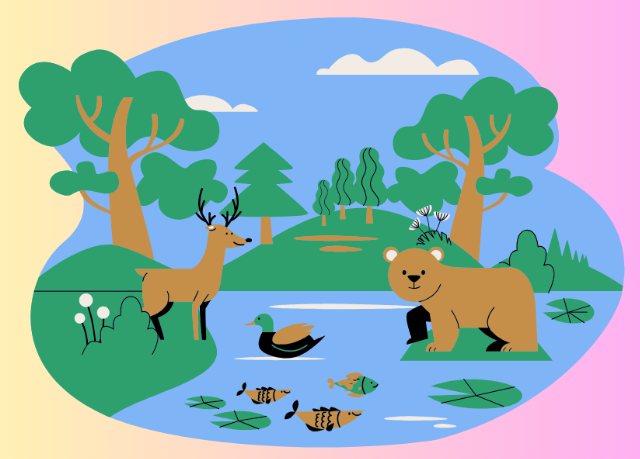
Should Animals Be Kept in Zoos? A Resounding No.

The debate over whether animals should be kept in zoos has been ongoing for years. While zoos argue that they play a crucial role in conservation and education, the reality for the animals often paints a different picture. Here, we argue against keeping animals in zoos, highlighting the ethical, environmental, and scientific reasons why these magnificent creatures belong in the wild.
The Ethical Dilemma
1. Natural Behavior Suppressed Animals in zoos are deprived of their natural habitats and behaviors. Wild animals have evolved over millions of years to live in specific environments where they can roam freely, hunt, and engage in social structures. Zoos, regardless of how well they are designed, cannot replicate these conditions. The lack of space and natural stimuli often leads to abnormal behaviors, known as zoochosis, which includes pacing, self-mutilation, and other signs of distress. A study published in Nature in 2014 found that 80% of captive elephants in European zoos exhibited stereotypic behaviors indicative of stress.
2. Loss of Autonomy Animals in zoos have little to no control over their lives. They cannot choose their mates, territories, or daily activities. This loss of autonomy is a significant ethical concern, as it undermines the very essence of their being and freedom. In the wild, animals have complex lives that involve making choices and solving problems, which are essential aspects of their existence.
Environmental Concerns
3. Disruption of Ecosystems Removing animals from their natural habitats can disrupt local ecosystems. Every species plays a specific role in its environment, and extracting them can lead to unintended consequences. For example, the removal of a top predator can result in overpopulation of prey species, leading to vegetation loss and ecosystem imbalance. According to the World Wildlife Fund (WWF), 60% of vertebrate populations have declined since 1970, largely due to habitat loss and ecosystem disruption.
4. Conservation Misconceptions While zoos claim to contribute to conservation, the reality is that most zoo-bred animals will never be released back into the wild. The focus often remains on charismatic megafauna, like lions and tigers, while countless less “marketable” species receive little attention. According to the World Association of Zoos and Aquariums (WAZA), only 15% of species in zoos are part of active reintroduction programs. True conservation efforts should focus on protecting natural habitats and addressing the root causes of species decline, such as habitat destruction and poaching.
Scientific and Educational Limitations
5. Flawed Education Zoos often promote themselves as educational institutions, but the education provided is superficial. Seeing animals in enclosures does not teach visitors about the complex ecological relationships and behaviors exhibited in the wild. It can also convey the wrong message—that it is acceptable to confine animals for human entertainment and convenience. A study by the University of Oxford in 2014 found that only 1% of visitors to zoos could recall specific educational information about animals’ natural behaviors and habitats.
6. Questionable Research Value Research conducted in zoos is limited in scope and applicability. Animals in captivity do not behave the same way as their wild counterparts, leading to skewed data. Genuine scientific research requires studying animals in their natural habitats, where they can interact with their environment and other species as they would naturally. A review published in Bioscience in 2012 found that less than 5% of research conducted in zoos resulted in actionable conservation outcomes in the wild.
The Way Forward
7. Sanctuaries and Wildlife Reserves Instead of zoos, we should focus on creating and supporting sanctuaries and wildlife reserves. These places provide more natural environments for animals, allowing them to live out their lives with dignity while still offering opportunities for education and conservation. Sanctuaries, unlike zoos, prioritize the well-being of the animals over public display. For example, the Global Federation of Animal Sanctuaries (GFAS) reports that sanctuaries provide larger, more naturalistic habitats compared to zoos, which significantly improves animal welfare.
8. Virtual and Augmented Reality With advancements in technology, virtual and augmented reality can offer immersive educational experiences without confining animals. These technologies can simulate wild environments and animal behaviors more accurately than any zoo enclosure, providing valuable educational content without the ethical concerns of captivity. A 2019 study by the University of Glasgow found that virtual reality wildlife experiences were as effective as zoo visits in enhancing knowledge about animal behaviors and conservation issues.
Additional Statistics
Animal Welfare Concerns
- A report by the Captive Animals’ Protection Society (CAPS) found that over 50% of zoo animals exhibit signs of mental distress, such as repetitive pacing and self-harm.
- The average lifespan of animals in captivity is often significantly shorter than their wild counterparts. For example, African elephants in zoos live on average 17 years, compared to 56 years in the wild, according to a study published in Science in 2008.
Conservation Funding
- Less than 5% of the revenue generated by zoos globally is directed towards in-situ conservation efforts, according to a report by the Born Free Foundation.
- Only 18% of the animals housed in the 50 largest zoos worldwide are classified as endangered or threatened, according to a study by the International Zoo Yearbook.
Educational Effectiveness
- A survey by the Association of Zoos and Aquariums (AZA) found that 70% of zoo visitors spend less than two minutes reading educational signage, indicating low retention of information.
- The same survey revealed that 50% of visitors could not recall any specific conservation messages from their visit.
Conclusion
Animals should not be kept in zoos. The ethical implications of confinement, the environmental disruptions, and the limitations of educational and scientific value make a compelling case against zoos. Instead, our efforts and resources should be directed towards preserving natural habitats, supporting sanctuaries, and leveraging technology for education. By doing so, we respect the intrinsic value of wildlife and ensure that future generations can appreciate these magnificent creatures in their natural glory.
Hello, I am Aman (: Full Time Traveler :) At the age of 41, in April 2023, fueled by my love for travel and the determination not to remain fixed like a tree, I embarked on a bold journey. Having dedicated 17 years to a corporate job, I chose to transition from a full-time employee to a full-time traveler, driven by the desire to break free from the routine and constraints of a conventional life. Along the way, I not only explored the wonders of travel but also uncovered the transformative power of financial freedom. I realized how it could liberate me to lead a life teeming with adventure, purpose, and fulfillment. Through my blogs, I am passionately sharing my story, aiming to inspire and provide valuable guidance to those, like me, who aspire to weave travel into a life overflowing with limitless possibilities.






















Post Comment
You must be logged in to post a comment.